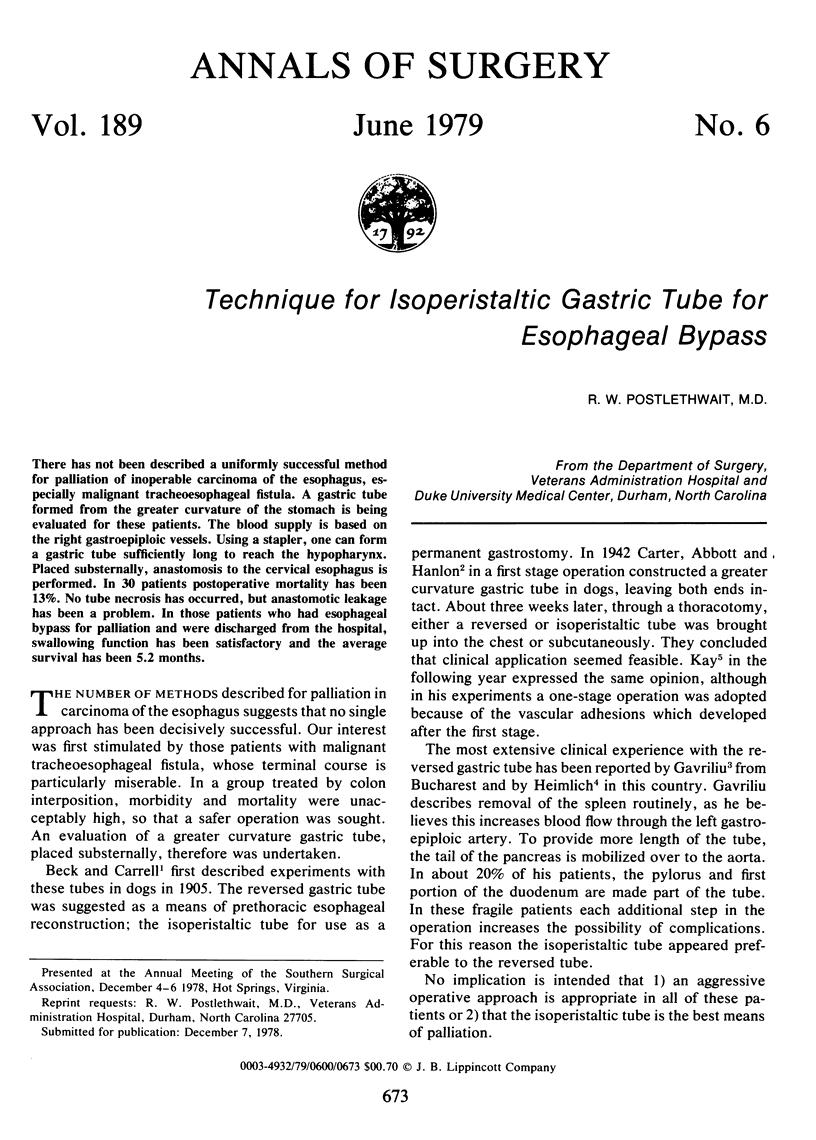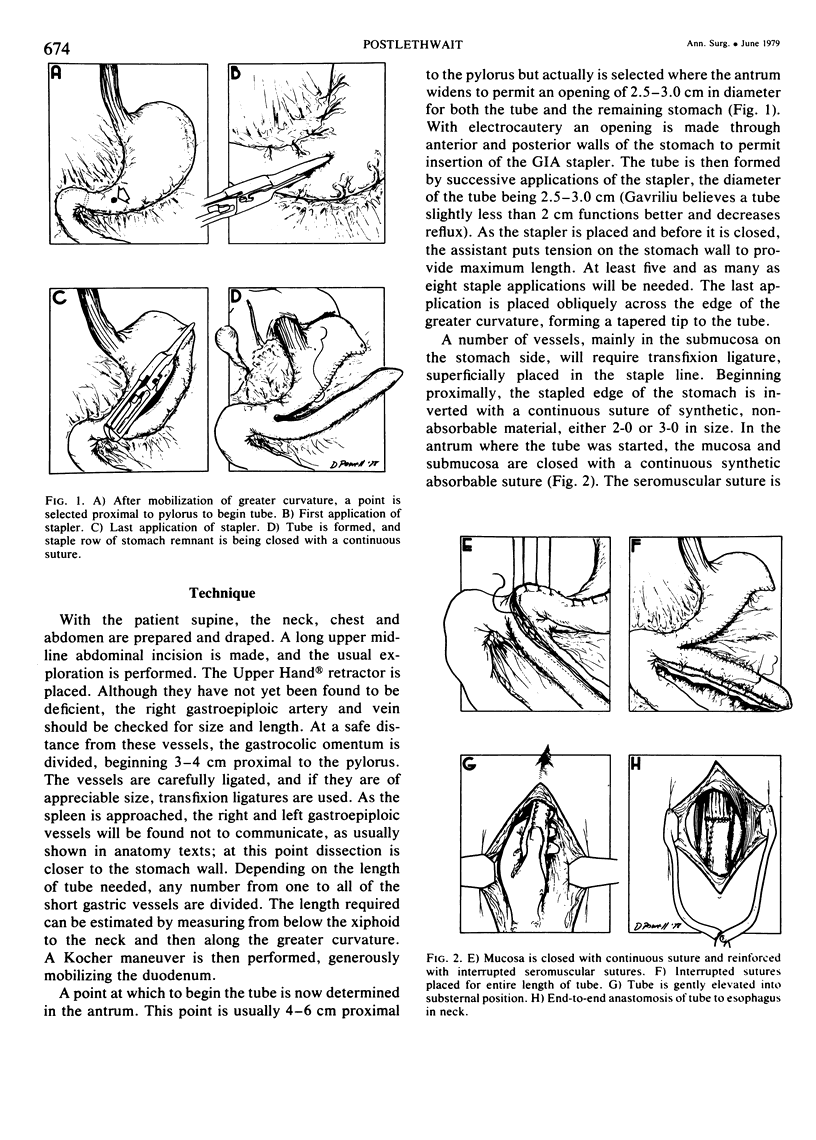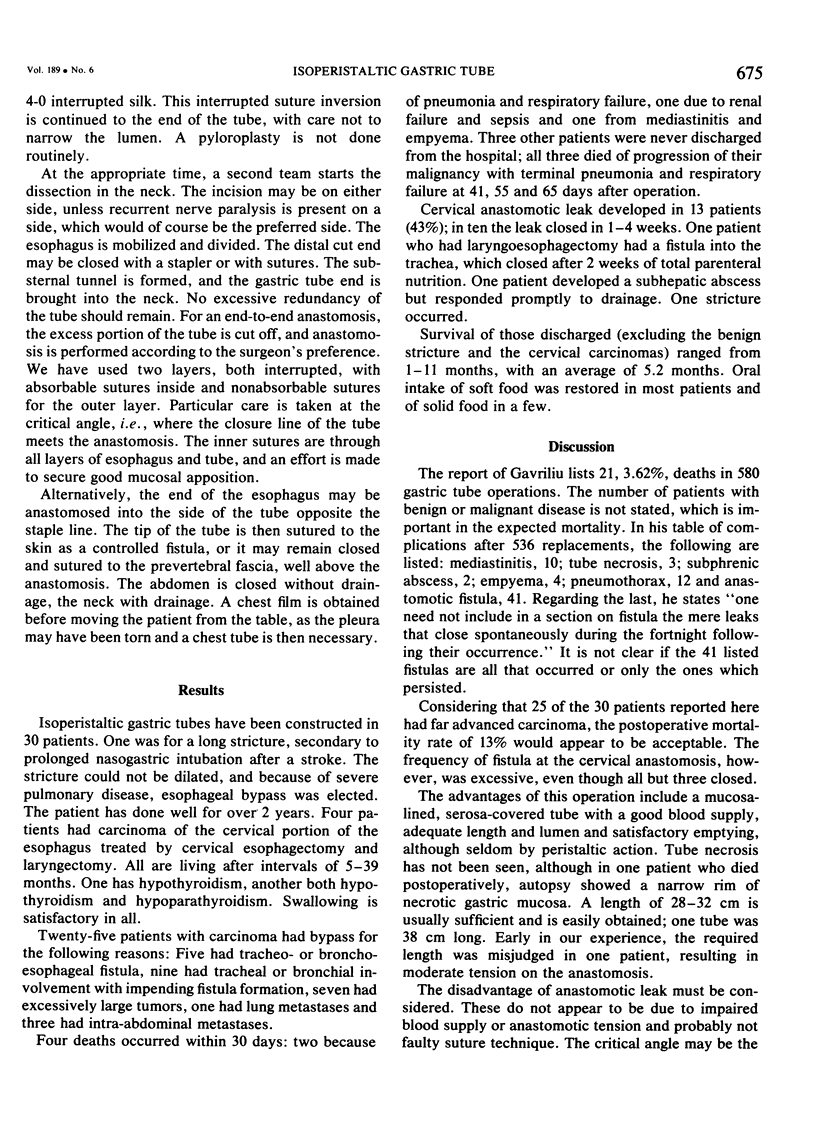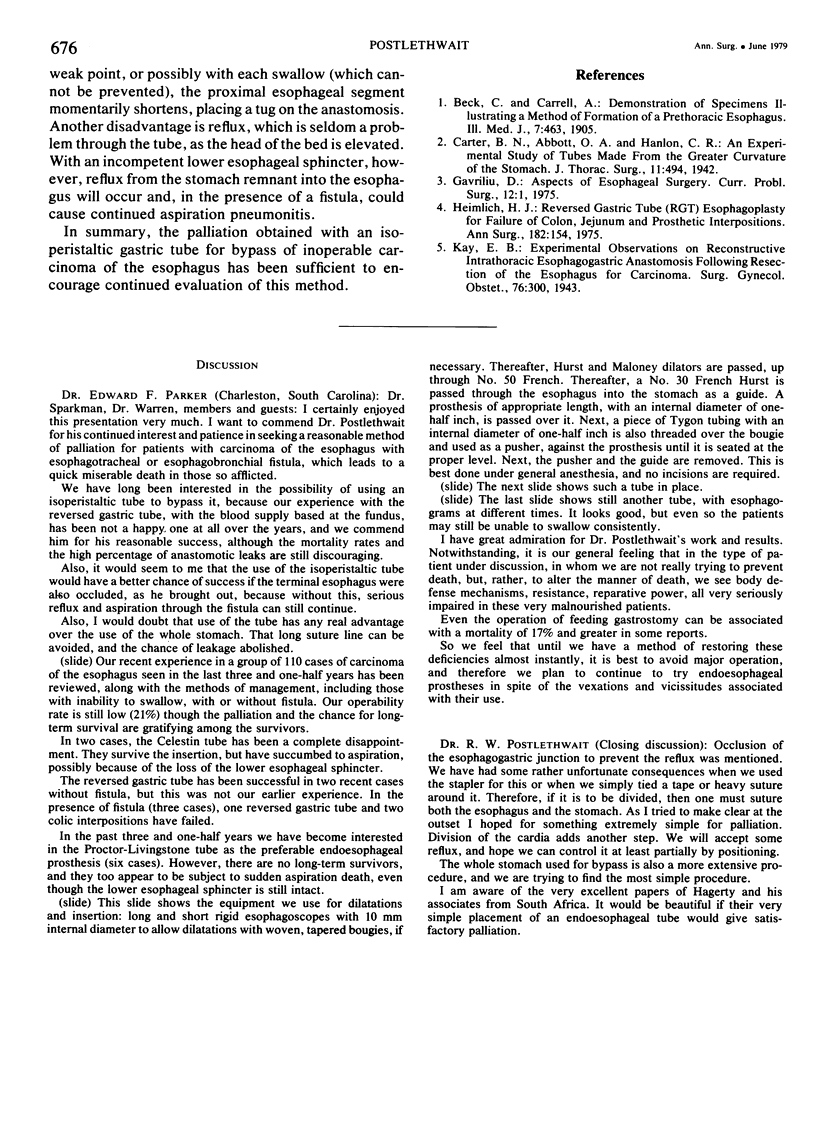Abstract
There has not been described a uniformly successful method for palliation of inoperable carcinoma of the esophagus, especially malignant tracheoesophageal fistula. A gastric tube formed from the greater curvature of the stomach is being evaluated for these patients. The blood supply is based on the right gastroepiploic vessels. Using a stapler, one can form a gastric tube sufficiently long to reach the hypopharynx. Placed substernally, anastomosis to the cervical esophagus is performed. In 30 patients postoperative mortality has been 13%. No tube necrosis has occurred, but anastomotic leakage has been a problem. In those patients who had esophageal bypass for palliation and were discharged from the hospital, swallowing function has been satisfactory and the average survival has been 5.2 months.
Full text
PDF



Selected References
These references are in PubMed. This may not be the complete list of references from this article.
- Heimlich H. J. Reversed gastric tube (RGT) esophagoplasty for failure of colon, jejunum and prosthetic interpositions. Ann Surg. 1975 Aug;182(2):154–160. doi: 10.1097/00000658-197508000-00013. [DOI] [PMC free article] [PubMed] [Google Scholar]


